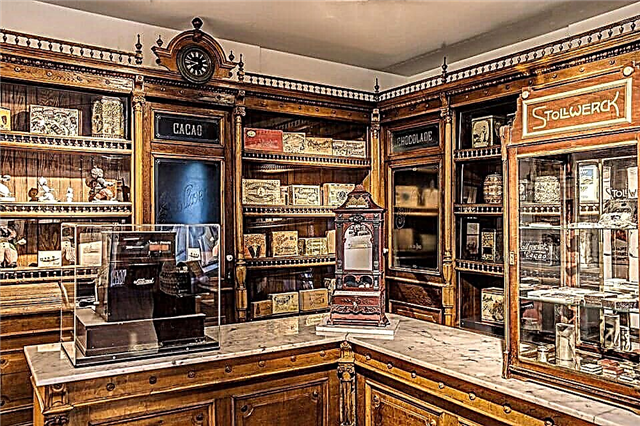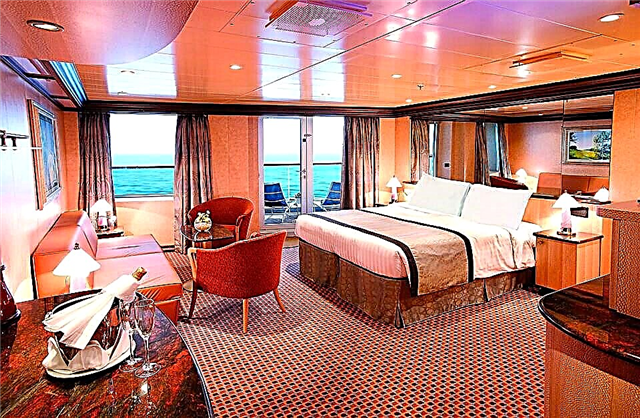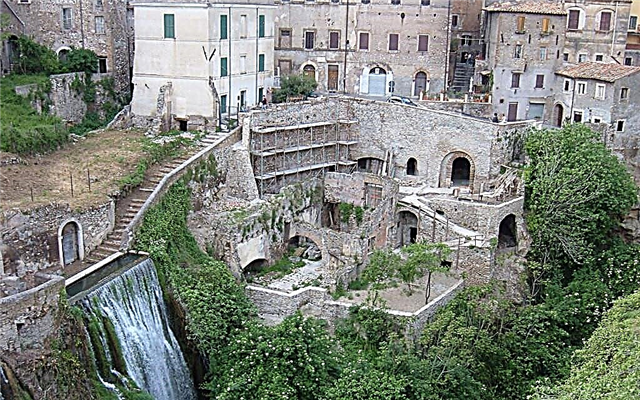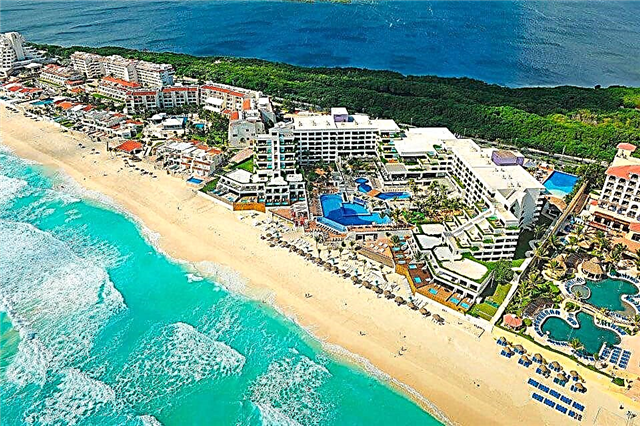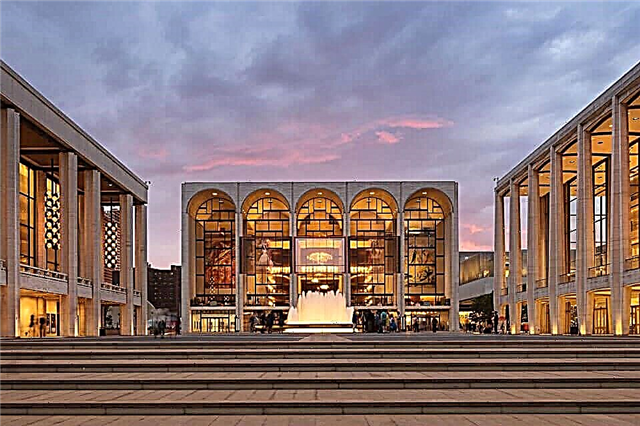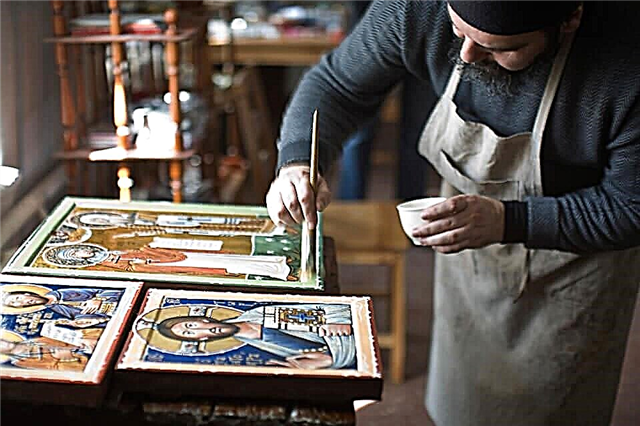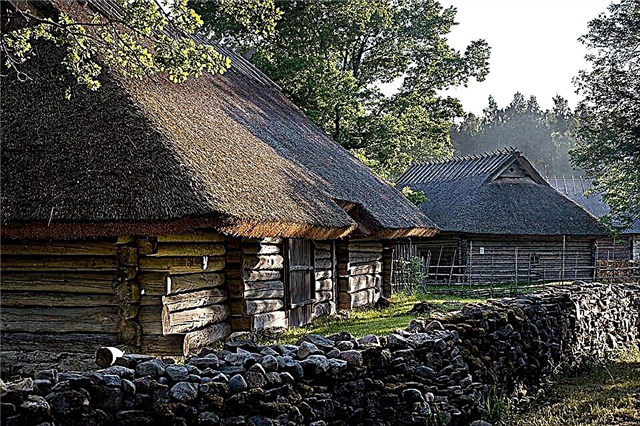The capital of Estonia - Tallinn is popular with tourists from all over the world. Here are located ancient architectural ensembles and structures, the construction of which was started by the Danes in the XII century and continued by subsequent rulers - knights of the Teutonic order, Poles, Swedes and Russians. Medieval buildings, fortresses and towers, which characterize Estonia's rich historical heritage, can be seen in the squares and streets of the city.
By ordering excursions in Tallinn in Russian, tourists can expect fascinating thematic walks, thanks to which they will have an opportunity to learn the national traditions and customs of the local population. You can pay for travel in cash, by credit card or through e-wallets.
Tallinn daily sightseeing tour at 15:15

Every day at 15:15 o'clock professional guides begin an interesting and informative two-hour voyage to the iconic places of Tallinn for 15 euros per person. The route runs along the cozy medieval streets of the historic quarters of the Old Town. These areas are full of attractions and are the hallmark of the capital of Estonia. The walk begins with a visit to the large Town Hall Square, surrounded by fabulous houses with colorful facades, restaurants and souvenir shops.
Several hundred years ago, the city magistrate met here, knightly tournaments were held, terrible executions were held, folk festivals and decrees of local authorities were announced. Much has changed since then, but the spirit of the celebration has survived to this day. Today it is a favorite place for tourists. Many festive events take place here: fairs, festivals, concerts and Christmas markets. The gothic building of the town hall dominates over the square, decorated with a high spire, a gable roof and a colonnade on the first tier.

The old town is framed by a two-kilometer fortress wall with twenty towers. These grandiose structures served as reliable protection against enemy attacks. Powerful stone walls, the height of which reaches 20 meters, create an atmosphere of ancient times. Tourists are impressed by the steep cobblestone street Pikk Yagl, which conveys the spirit of the Middle Ages. In ancient times, she divided Tallinn into an "upper" and "lower" city. One part was inhabited by nobles, while the other was the habitat of merchants and artisans.
The Tallinn sightseeing program includes an external examination of the following religious shrines: the Church of St. Olaf with a spire soaring upward by 124 meters, the majestic Orthodox Cathedral of Alexander Nevsky with dark domes, as well as the Lutheran Church of St. Mary, in the halls of which knightly arms-epitaphs are hung. In the west of the Old Town, a three-storey building of four buildings rises, forming an inner courtyard. This is the building of the Parliament of the Republic of Estonia, which has retained its present appearance since the reign of Catherine the Great.
The voyage ends at the observation deck of a high tower, from where the whole historical Tallinn with its small streets and houses with bright tiles appears.
Tallinn mystical city - stories of the Red Monk

Travelers are offered to take part in a meaningful evening walk for 12 euros through places steeped in mysticism, legends and secrets. The hiking expedition is led by a costume guide dressed in a red monk's robe. Everyone who dares to take this tour is given a torch, with which he will illuminate the path through the narrow medieval streets of Tallinn.
The red monk will tell about the executioners, robbers, sorcerers, swindlers and knights, whose souls did not find rest after death and continue to roam the city. Tourists will see where executions were carried out and pillars of shame were erected. The expedition will be supplemented with stories about the local Don Juan, the old man from the lake and the unfortunate servant. The voyage runs daily from 20:00.
Time travel or Estonia 100 years ago

To get acquainted with Estonian folk culture, architecture and crafts, it is recommended to go to the open-air ethnographic park-museum - Rokka al mare. This is a picturesque wooded area, where you can see more than 70 buildings of the 17th-20th centuries. On a vast territory of 79 hectares there are old houses, windmills, shops, chapels, schools and much more. Visitors to this "village" can go into any house and get acquainted with a typical peasant farm life. The museum hosts celebrations, festivals and dance evenings. The three-hour journey 100 years ago takes place every day. The tour price is 20 euros per person.
Tallinn for Kids: Fabulous Walking Tour

Literally every centimeter of the medieval street paved with cobblestones is shrouded in legends and mysteries. Tourists are offered to walk through the old quarters of Tallinn with an all-knowing guide who will turn his story into an exciting fairy tale. The voyage is recommended for families with small children. Travelers will hear the story of Old Thomas, whose figure crowns the spire on the town hall building. As a child, Thomas won an archery competition and has since been appointed city guard.
The young man confidently justified the trust placed in him, heroically fighting the robbers. By old age, the brave warrior grew a legendary mustache and became a highly respected citizen of Tallinn. Guests will be shown a medieval pharmacy, in which a delicious medicine was invented - marzipan. This delicacy, consisting of almonds and sugar syrup, can also be used to sculpt your own figurine. Tourists will see the well where the "water" lives, then walk over the fortress wall and look into one of the ghost towers.

A walk along the narrow lane of St. Catherine will complement the pleasant experience. There are many workshops where artisans make various products from leather, glass, fabric and ceramics. The cost of the voyage is 48 euros per person.
Legends of Old Tallinn

Tallinn's history is impressive with an abundance of myths and legends. Legends were passed from mouth to mouth, which contain only a small part of the truth, but arouse increased interest among the guests of the city. A tour of the old district will allow you to recreate in your imagination the past medieval customs and times. Connoisseurs of local attractions will tell tourists about the crooked cross on the spire of St. Olaf's church, about the mermaid who spoiled the water, about ghosts, valiant knights and the unfortunate girl who was drowned by her brothers. The construction of many buildings in Tallinn was not complete without the intervention of evil spirits.
The guides will show you the house of the Blackheads Brothers, where the cheerful and intoxicated life of single foreign merchants reigned. Peter I stayed here, for whom sumptuous receptions were arranged. The festivities were so amusing that one of the Blackheads brothers once even had to eat a mouse. An educational and informative voyage, costing 48 euros, lasts more than an hour. Tourists will be told many legends that will be remembered for a long time.
Hiiumaa Island - the land of heroes

The pristine silence and unity with the many-sided nature await tourists on the island of Hiiumaa, which is 70 kilometers long. For a long time, physically strong people lived here, so the island began to be called the land of heroes. On the ferry, travelers will go to a picturesque region famous for its many kilometers of sandy and pebble beaches, beautiful landscapes, a protected wooded area and various attractions.
One of the symbols of the island is the Kõpu lighthouse, built in 1531.Its signal lights still serve as a faithful guide to ships. The structure ranks third in the world among the ancient active lighthouses. There are also two more lighthouses in Hiiumaa: Ristna and Tahkuna. They were installed during the time of tsarist Russia in the 19th century.

The program of the route includes an overview of farmsteads, stone churches, museums, a weaving factory and the mansion of a German nobleman who previously owned the island of Hiiumaa. Tourists will follow nature trails through the wooded hills. The valleys of sand dunes, framed by pine trees and cut by spring streams, will impress you. A popular place on the island is a gravel embankment extending into the sea for 3 kilometers, which connects Hiiumaa with other islands.
The cost of a trip to the island is 300 euros. Unique landscapes, forests, springs, sea, ancient buildings - all this will not leave anyone indifferent.
Ethno is strong, ethno is stylish!

You can explore the historical roots of the Estonian ethnos for 80 euros at the Rocca al Mare Museum, which is a beautiful forest park on the shores of the Gulf of Finland. Wooden huts, mills, chapels, well-groomed pastures recreate the peasant life and demonstrate the development of the culture of the local population. A professional accompanying group will tell you how the villagers grew bread, caught fish, taught children to read and write, prepared for the winter cold and spent their free evenings. Walking in the fresh air and admiring the ancient buildings will give a lot of positive emotions. The tour of the ethnographic museum will end with a visit to the village shop, where you can buy various souvenirs and delicacies.
Pirita area and Viimsi peninsula

In the east of Tallinn there is the Pirita district and Viimsi parish. They are attractive and charming places to hike along the long promenade and in the picturesque parkland. Tallinn's Pirita district was actively developing before the 1980 Olympics. Sports and entertainment complexes, a TV tower and residential areas were erected here. Today it is the business card of the Tallinn coastline.
The clean sandy beach, framed by a pine strip, is the best in the Baltic region.
The program of the voyage involves a visit to the botanical garden and the estate of Count Orlov-Davydov, where the film "The Dog of the Baskervilles" was filmed. After Pirita, the tour will continue on the Viimsi Peninsula.
In the central part of the land there are dense forests, and on the coast there are fishing villages. In addition to the beautiful nature, there is an open-air museum showing a well-to-do fishing farm. The final destination of the route will be a local cafe in the form of an inverted boat, in the windows of which you can see the panorama of all of Tallinn. The tour price is 30 euros per person.
Travel to Northwest Estonia to Fall Manor

One of the pearls of Estonia is the village of Keila-Joa, located in the north of the country. The attention of tourists is attracted by the main attraction of this place - the Fall manor and the adjacent territory. The palace belonged to the Russian statesman Alexander Benckendorff, a military leader, hero of the Patriotic War of 1812 and chief of the gendarmes. The neo-Gothic structure is decorated with balconies, a tower, columns and a balustrade. Many important persons came here, among whom was Emperor Nicholas I. During his visit, the autocrat planted several trees here.
The estate is surrounded by a beautiful park with a river. Travelers will be enchanted by the waterfall, the height of which reaches 6 meters and the width is about 70 meters. The program of the tourist route includes a survey of the Lutheran Church of St. Michael, as well as a visit to a water mill, where a trout farm is set up. The voyage through this charming corner of paradise lasts 4 hours. The cost of a walk for a group of up to five people is 150 euros.
Outside the fortress walls

An informative sightseeing tour of the interesting and iconic places of Tallinn begins every day from 10:00 a.m. The voyage originates from the Town Hall building. The organizers of the trip have prepared a route indicating the diversity of the city's districts. Tourists will have the opportunity to drive around the historic quarters by car, observing the fortress wall, towers and spiers of ancient buildings. Then there will be a walking tour in the modern center of Tallinn.
Guests will be enchanted by a large landscaped park - Kadriorg. A beautiful imperial palace rises here, built on the initiative of Peter I. The emperor wanted to use the building as his summer residence. The mansion with its colorful façade served as a guest house for all the Romanovs who came to Tallinn. Around the mansion are planted centuries-old trees, a Japanese garden with a pond, fountains and sculptures are installed. On the territory of the park, tourists will see a modest one-story white house of Peter the Great, which contains the original things of the tsar, as well as a monument to the crew of the Russian battleship Rusalka sunk in 1893.

The route runs through the Tallinn Song Festival Grounds, where concerts, festivals and celebrations are held. The sightseeing trip will continue along the asphalt path along the embankment to the Pirita area, where tourists will visit the Olympic Village and the ruins of the ancient monastery of St. Birgitta. The voyage will end in the Kalamaja region, where fishing villages were once located. Nowadays, the place is replete with beautiful two-story wooden houses that house fashion boutiques, shops and restaurants.
For 25 euros per person, an impressive view of the streets and quarters of medieval, imperial, Soviet and modern Tallinn is carried out.
Natural beauties of Lahemaa National Park

Amazing Estonia impresses with its unspoiled and diverse nature. The country's largest National Park, Lahemaa, is located on the coast of the Gulf of Finland, where tourists are advised to go for a walk together with a professional guide. The route, worth 192 euros, runs through a unique landscape saturated with dense forests, lakes, sand dunes and beaches, swamps, as well as landlord courtyards converted into museums and holiday homes.
Lahemaa Park is riddled with boardwalk trails, which are easy to walk on, taking in the beauty around and breathing in the coniferous aromas. The voyage program includes a visit to manor complexes that belonged to nobles who faithfully served the Russian crown. The estates consist of manor houses and buildings surrounded by gardens with manicured alleys and ponds. The picturesque villages of "captains" and fishermen will make an unforgettable impression. Tourists will see homemade boats, models of sailing ships, old tools for shipbuilding and fishing, as well as taste Estonian cuisine.
The beauty and grandeur of a medieval city

Professional guides in the capital of Estonia invite tourists to take part in an informative two-hour walk through the historic quarter of Tallinn. Gothic old buildings, high towers, cobbled streets, fortress walls - all this personifies the distant past of the Baltic country. Tallinn residents care about their history, therefore the Old Town has remained unchanged in its medieval form. The program includes an overview of the architectural complex formed in the XII-XV centuries.
Guests will see the Town Hall building, the Dome Cathedral, the Church of St. Olaf, the Alexander Nevsky Cathedral, many quaint houses with pediments, the majestic Toompea Castle towering over the city. Inquisitive vacationers, guides will lead through the narrow streets, along which are located taverns, museums, cafes, craft and merchant shops. The cost of a tour in the past is 53 euros.
Walk through estonian manors Nõmme-Fall-Padise

In Estonia, there are about 1,000 manor estates (manors) that for centuries belonged to German and Russian nobles, as well as church communities. Today, most of the estates are in exemplary order. Many of them are used as museums, hotels and restaurants. Tourists are offered to visit the most interesting mansions surrounded by well-groomed parks, where a poetic atmosphere reigns.
The journey begins with a visit to the estate of the German Baron Nikolai von Glen in the picturesque Nõmme district. The local castle was built in the Gothic style and outwardly resembles interconnected towers with crenellated roofs. There is a forest around the building, where you can find sculptures, an observatory and various stone ruins. The next point of the walk is the castle-monastery - Padise. This unique medieval building was built in the 13th century.

Massive stone walls and a high tower attract tourists' attention. Most of the castle is in ruins, among which you can freely wander and feel like an archaeologist. The most romantic place in Estonia is the Fall manor of Count Benckendorff, the head of the secret police of the Russian Empire. The estate rises above the rocky bank of the Keila River. The palace with a tower is decorated with columns, balconies and arched windows. The manor is famous for its waterfall, centuries-old red pines, an abundance of bridges and benches.
On the way back to Tallinn, tourists will make a short stop on the Hamlet rock, from where an amazing view of the sea opens. The price of a five-hour walk is 135 euros for a group of up to 4 people.
Monastery of St. Birgitta and the history of the Pirita area

Fans of historical tours should definitely visit the picturesque ruins of the nunnery of St. Birgitta, towering on the banks of the river away from the bustle of the city. The building was founded in 1407 and destroyed by the army of Ivan the Terrible 150 years later. However, the majestic walls and the main facade of the shrine remained unaffected by ruin. Tourists will be impressed by the preserved massive 35-meter high pediment, as well as the underground tunnel. The monastery is located in the Pirita area, famous for its beaches, promenades and luxury residential areas. As part of the voyage, a review of the Parsun Olympic Complex is included. The tour cost is 48 euros.
Romantic evening sightseeing tour of Tallinn

Tallinn creates a romantic mood. The city reminds of the plots of Christmas tales. Narrow cobbled streets, fortress walls and towers, houses with colorful facades and quirky weather vane, artisan and trade shops - everything here is fanned by the medieval era. While staying in Tallinn, tourists can join the evening walk for 53 euros in the old quarter, where the accompanying group will conduct a sightseeing and educational excursion. The guests of the capital of Estonia will have a journey into the distant past.
Unwittingly, it begins to seem that the royal carriage will drive out from behind the bend or a brave knight in armor on a black horse will sweep through, and peasants from nearby villages bring milk, cheese, meat, vegetables and fruits to the market. Streets diverge from the Town Hall Square, where the working life of blacksmiths, jewelers and potters is in full swing. The observation deck offers a panoramic view of the spiers of churches, ancient houses and structures, as well as the vastness of the Gulf of Finland.

Tourists will see the Dome Cathedral, the Church of St. Oleviste, the Orthodox Cathedral of Alexander Nevsky, numerous towers, merchant and craft buildings, a medieval pharmacy. The all-knowing guide will tell you love, mystical and tragic legends, which are abundant in Tallinn.
Open Air Museum - Roca al Mare

An informative walk awaits vacationers in the museum located on the territory of the coastal region of Tallinn - Roca al Mare. This is a picturesque forest park with an area of 80 hectares, where ancient farmsteads are spread out. The atmosphere of the peasant way of life of the 17th-20th centuries has been recreated here. Huts, mills, smithies, chapels embody the identity of an Estonian village. Museum visitors are allowed to look into any building and get an idea of the life of the villagers of past eras. The price of a 2-hour tour of the Ethnographic Museum is 53 euros.
Trip to Pukhtitsa monastery

There are many holy places in Estonia that are worthy of the attention of tourists. One of these is the Pukhtitsa Monastery, which remains the only currently operating Orthodox women's monastery in the country. The complex of buildings was erected on the Bogoroditskaya Mountain, where in the 16th century an Estonian shepherd saw the image of the Virgin Mary dressed in a radiant robe. At the place of the sign, the peasants discovered a holy spring and an icon in a crevice of an oak tree.
Pyukhtitsa Cathedral is an architectural ensemble consisting of the majestic Assumption Cathedral, the Refectory Church, small chapels, household and residential buildings. Tourists are given the opportunity to plunge into the holy spring, get acquainted with the way of life of the nuns, and also survey not only the adjacent territory of the monastery, but also admire the interior decoration of the temples. The cost of a visit to the heart of Orthodox Estonia is 160 euros.
Travel to the East of Estonia to the town of Rakvere

Rakvere, the sixth largest city in Estonia, is located 100 kilometers east of Tallinn. This is one of the most popular tourist centers, where many attractions are concentrated. The main attraction for guided travelers is the 14th century Order Castle. This is a small and dilapidated fortress, where tourists can take an active part in knightly tournaments - archery and crossbow shooting, sword and spear battles. Visitors to the castle will be taught how to make gunpowder, mint coins and ride horses. Thrill-seekers can visit the torture chamber.
As part of this trip to the city of Rakvere, tourists will be able to see the smallest castle in Europe - Kiiu. The structure is a four-story tower. Now there is a cozy cafe in it. Then the walk continues to the Jagala waterfall 8 meters high. The ledge under the waterfall allows you to walk along its entire width, which makes this place especially impressive. The cost of travel to the east of Estonia is 160 euros per group.
In Tallinn, GuruTurizma recommends the following hotels:

